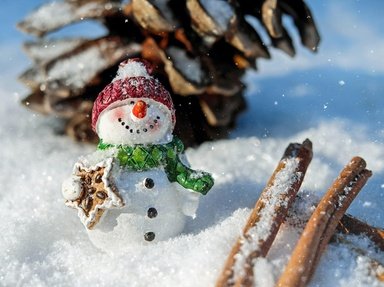Quiz Answer Key and Fun Facts
1. Many carols we love to sing are translations from foreign languages. Which of these Christmas carols, however, was originally written in Early Modern English?
2. In anticipation of Christmas, some households light an Advent wreath of four candles. Traditionally, three candles are violet (or purple), while one is which other color?
3. Nativity plays really took off in 13th century Europe. Which saint associated with animals and peace was responsible?
4. Which Christmas gift-bearing figure is NOT correctly matched to his country?
5. What is the name of the "golden bread" that is eaten in Italy for Christmas?
6. In some places, Christmas decorations are left up until January 6. In which Aztec country do children add figurines of the Three Kings to Nativity scenes and leave shoes by their beds on the night before?
7. Early commercial British Christmas cards (19th century) surprisingly favored what kind of themes?
8. Because they live in the Southern Hemisphere, Australians don't bother with winter-themed decorations for Christmas.
9. Which phrase of Christmas cheer is NOT correctly matched to its country?
10. Watching Christmas specials has become quite a tradition in the United States. Which of these American Christmas TV specials was broadcast first?
Source: Author
gracious1
This quiz was reviewed by FunTrivia editor
stedman before going online.
Any errors found in FunTrivia content are routinely corrected through our feedback system.
